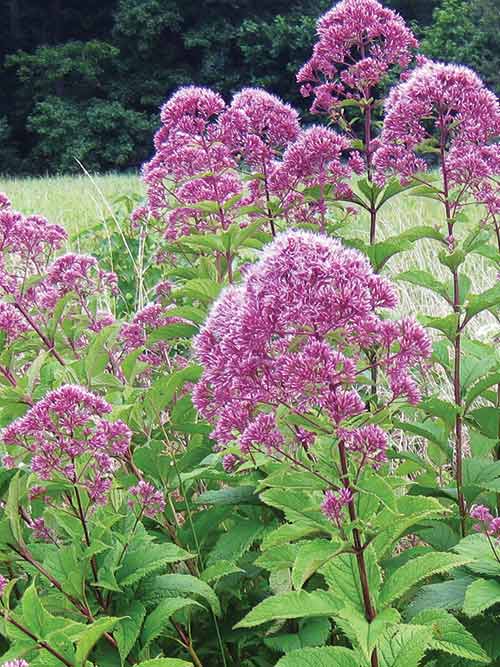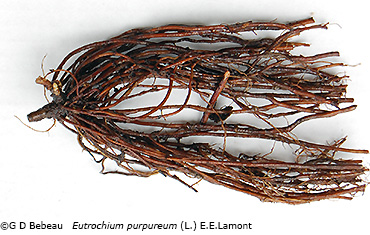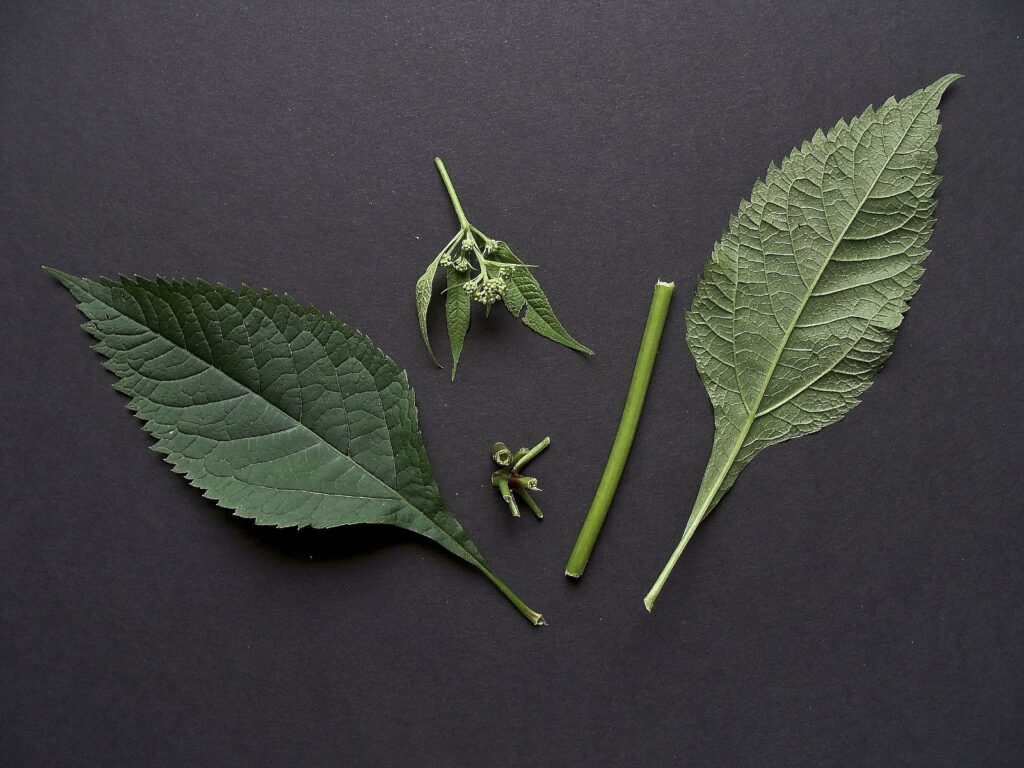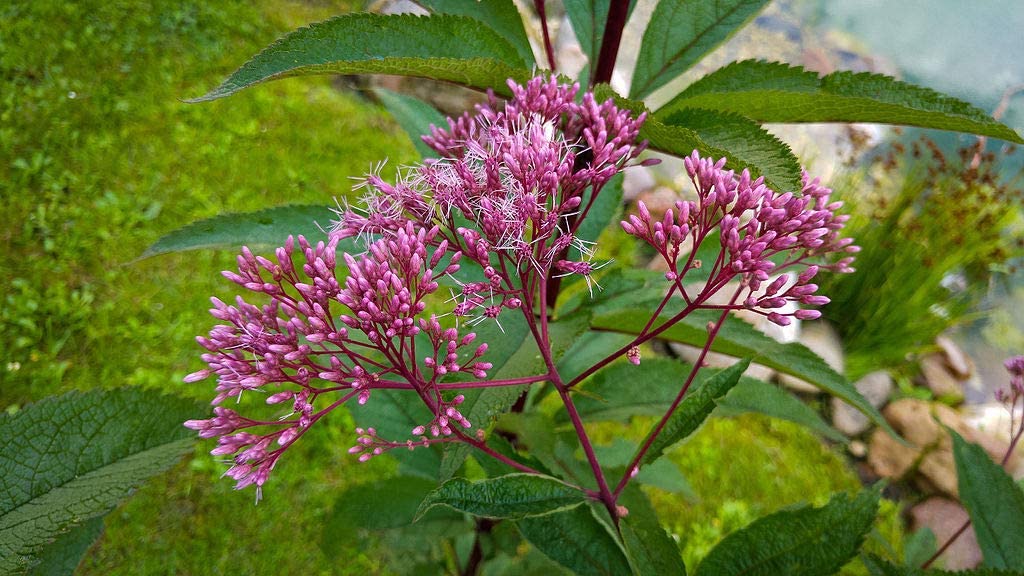Eupatorium/Eutrochium purpureum

Native to North America, including the Connecticut River Valley, Joe-Pye-weed or gravel root (eupatorium purpureum or eutrochium purpureum), is a perennial with an important history as a medicinal plant. Joe-Pye-weed collectively refers to a group of plants that are a part of asteraceae family, with five recognized species.1 This plant can grow rather tall and tends to grow in clumps with identifiable rounded pink or purple flower clusters. The earliest recorded uses of this plant in non-Indigenous records are in western Massachusetts.1
History of the Name
There are many stories circulating about the origin of this plant’s name but historical accounts state that it came from an Indigenous medicine-man, Joe Pye.1 2 According to Dr. Stephen West Williams, it is thought that Joe Pye used it to cure typhus as this plant induces sweating and thus became known as Joe Pye’s weed. Joseph Pye, a Mohican sachem (leader) of the Stockbridge Indians, with an alias of Shauqueathquat, is likely the Joe Pye referenced, but his role as a medicine-man cannot be confirmed.1 Finally, its familiar name, gravel root, refers to the use of its roots to treat kidney stones which were called “gravel.”3
Medicinal and Other Uses
This plant is most known for its ability to help lower fevers, because of the stories of how it got its name.1,2 Overall, this plant can be used to treat urinary issues, the roots and herb are an astringent and a diuretic, good for treating kidney stones and urinary ailments.4 For older people, this plant has been shown to help with indigestion.2 While the plant’s medicinal benefits can be had through teas, it can also be turned into a poultice to treat burns.3 Indigenous peoples also used the flowers and seeds of this plant for red or pink dyes.4
Harvest and Preparation
This plant has a flowering period from July to September and its leaves and flowers can be harvested during the summer.5 It is often best practice to harvest blooms before they flower and to then dry them by hanging them upside down. In the fall, its roots can also be harvested by chopping and drying.5 To identify this plant, the undersides of the leaves should show only a sparse covering of hair along the main veins of the leaf.6 Preparation of the parts of this plant into an herbal tea can be done by steeping the roots or leaves or blooms in boiling water for about 30 minutes before straining.5 When crushed the leaves emit a vanilla-like smell. Additionally, the ashes of the roots can be used as salt-substitute to flavor foods.3


References
- Pearce, Richard B, and James S Pringle. “Joe Pye, Joe Pye’s Law, and Joe-Pye-Weed: The History and Eponymy of the Common Name Joe-Pye-Weed for Eutrochium Species (Asteraceae).” The Great Lakes Botanist, vol. 56, Michigan Publishing, Ann Arbor, MI, 2017, pp. 177–196. ↩︎
- Williams, Stephen W. Report on the Indigenous Medical Botany of Massachusetts, 1849. pp. 17 ↩︎
- Mitchell, Gordon. “Joe-Pye Weed.” Indiana Native Plant Society, https://indiananativeplants.org/native-plants/gordon-mitchell-articles/. Accessed 5 May 2024. ↩︎
- Krochmal, Arnold, et al. A Guide to Medicinal Plants of Appalachia. U.S. Forest Service; for Sale by the Supt. of Docs., U.S. Govt. Print. Off, 1971. pp. 120-121 ↩︎
- Gardiner, Barbi. “Surprising Joe Pye Weed Uses & How to Make a Tea from It.” The Outdoor Apothecary, 31 Aug. 2022, www.outdoorapothecary.com/joe-pye-weed-uses/. ↩︎
- “Joe-Pye Weeds.” Missouri Department of Conservation, https://mdc.mo.gov/discover-nature/field-guide/joe-pye-weeds. Accessed 5 May 2024. ↩︎
